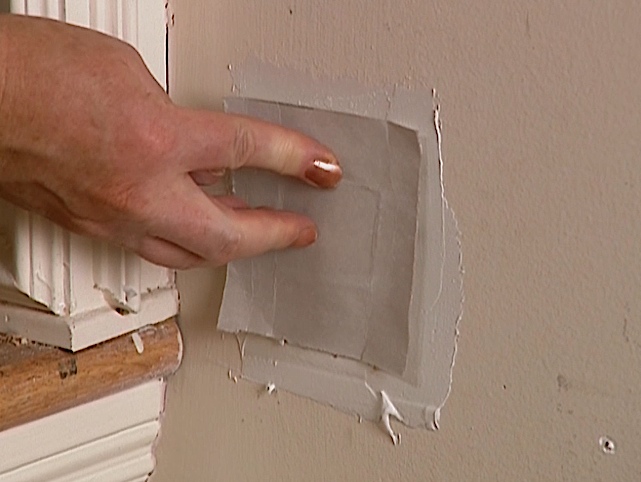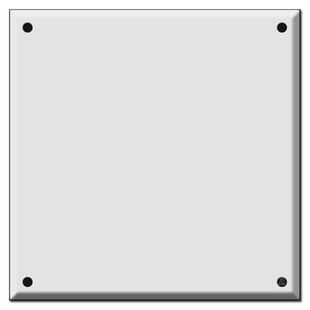

If it is round or irregular in shape, use a razor knife or small saw blade to make the hole square. If your paint includes primer, you can skip the priming step.ġ. Sand the area, wipe with a damp cloth, let it dry, and then prime and paint.
#BEST WAY TO COVER HOLES IN WALL PATCH#
If the patch still isn't smooth, apply a third coat (skim coat) and feather the bumps out to make the edges as flush as possible.Ħ. Then, smooth the edges until the compound is flush with the wall. This time, add a thinner coat of drywall compound, taking care to spread it an inch or two past the original application. Allow the putty to dry (it will take about an hour).ĥ. Press the patch into the hole, and use your biggest putty knife to flatten the paper to the wall. Put a generous coat of compound on the inside paper portion of your custom piece. Put a generous coat of drywall compound on the wall surrounding the hole. You should now have a piece of drywall that matches the hole completely with the front paper still attached.Ĥ. Repeat, this time tracing the right and left sides of the hole.

Snap off and peel away the excess drywall while leaving the front paper intact. Line it up to the squared-off hole and use your sharp utility knife to trace the back of the drywall along the top and bottom edges of the hole. Take a piece of drywall about twice the size of the hole. It should be long enough to extend at least 1 inch past the edge of the hole on either side.ģ. Place a piece of wood through the hole and attach it on both sides across the opening using drywall screws. Remove any drywall debris or chipped paint and sand the area smooth.Ģ. If the hole is irregularly shaped, use a small saw blade or razor knife to transform it into a square. This is the more complicated method but will yield the most seamless-looking results.ġ. Apply a coat of primer to seal, then paint the area to match the rest of the wall. Sand any imperfections in the dry joint compound until the area is smooth. With a putty knife, apply joint compound over the mesh tape and screws. Place mesh tape over the seams of the opening around the drywall patch. Using a screwdriver (a power screwdriver is recommended) secure it to the piece of wood. Cut the piece of drywall with the razor knife to size and place it in the opening. Place a small piece of wood - like plywood or 1x3 - through the hole and attach it on both sides across the opening using drywall screws. Remove any loose drywall debris and sand the area smooth. These are his instructions for fixing a medium-sized hole: If done incorrectly, he says you'll end up with a bulge in the wall. "This size hole will require a little more finesse in your ability to apply joint compound into the rest of the wall," says McGee. If the hole is larger than ½ inch, but still less than 6 inches in diameter, you'll need to step up your skills.
#BEST WAY TO COVER HOLES IN WALL INSTALL#
Install a small piece of wood behind the hole to secure the drywall patch. "You can prep the wall to receive the repair by scraping a clean putty knife across the damaged area to remove any loose debris or chipping paint - and then wipe away the dust with your dry cloth." Regardless of the hole's size, he says you'll need to do some prep work. "Get all of your tools ready so that you don't have to look for them after you've mixed your plaster - because it will dry out," says Steckel. "Fixing a wall, even a small repair, more often than not will create a mess, so move anything that you don't want dust or plaster on out of the way," says Steckel. Also be proactive as it relates to messes. But if you seal it before applying the finish paint, he says the repair will be undetectable. "The joint compound and new drywall will react differently to the finished paint if it is not sealed, and the repair will be obvious," McGee explains. Before you paint, McGee recommends applying a primer to that area to seal the new drywall and joint compound. You can purchase drywall texture spray cans and apply them like spray paint.

McGee says "orange peel" and "knockdown" are common types of textures. If the area is textured, you'll also need to apply that texture so the repair blends in. "So I recommend ensuring you have the exact paint before fixing the hole." "If you don't have the correct paint, you might be painting the entire wall from one corner to the other to ensure your repair doesn't stand out," he says. David Steckel, a home expert at Thumbtack, says that paint shouldn't be an afterthought. Regardless of the size of the hole, there are some steps you should take to ensure your repair is virtually undetectable once it's finished.


 0 kommentar(er)
0 kommentar(er)
